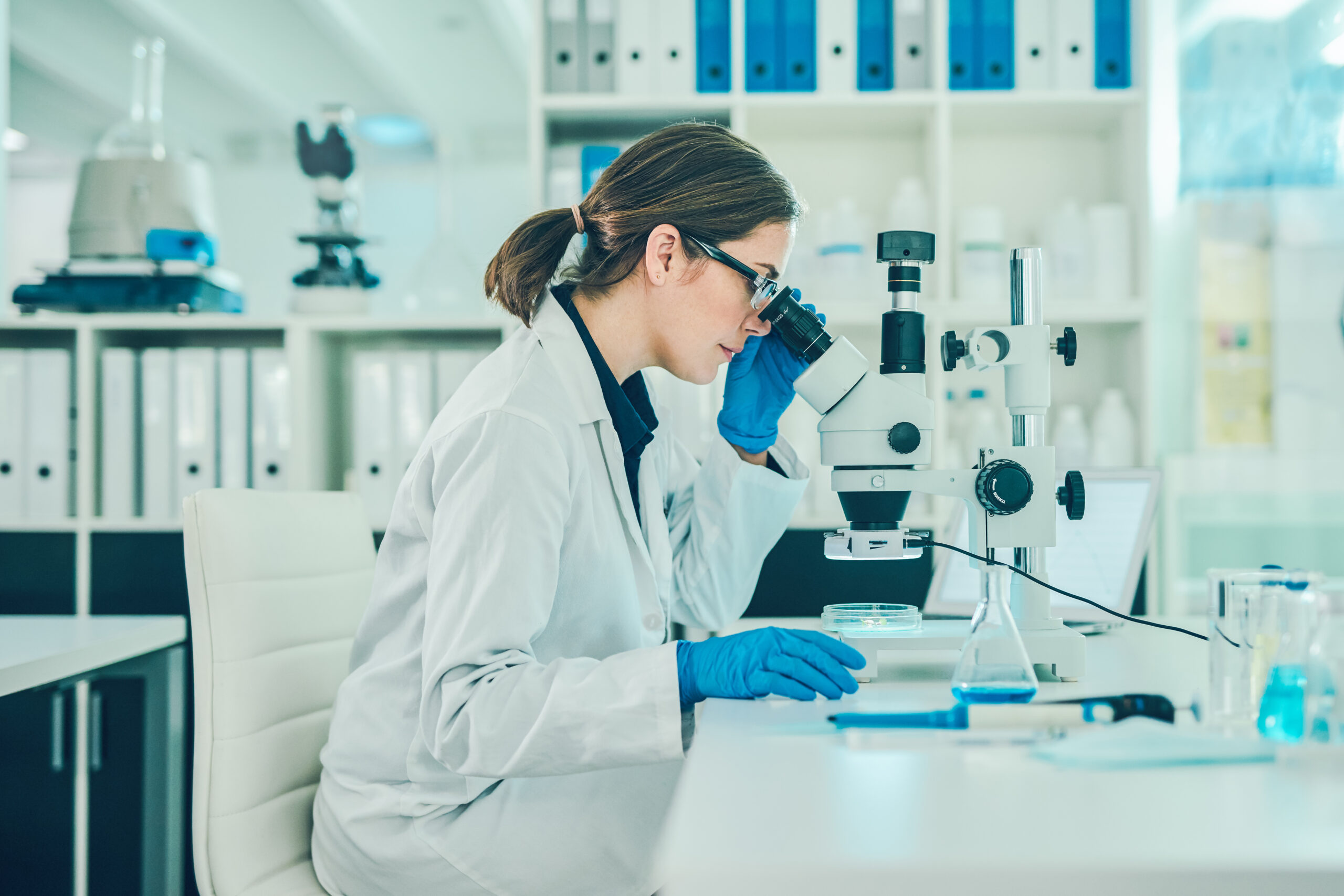
There are thought to be around 300 million people worldwide living with a rare disease at any given time.1 While their conditions and symptoms will vary, many aspects of their experience are shared.
Following on from Rare Disease Day 2022, we decided to take a deeper look into the patient journey of those living with a rare health condition. In this blog, we discuss how their experiences may differ from those living with more prevalent conditions and the ways in which we can improve three key stages: initial contact with primary care, diagnosis and education, and treatment.
Initial contact with primary care
For rare disease patients, the appearance of the first symptoms, leading them to reach out to a primary care service can be the start of a long and frustrating journey. The process of gaining a rare disease diagnosis is often described as an odyssey2 – and it’s understandable why.
At the time of writing, there are thought to be as many as 7000 identified rare diseases worldwide.3 Around 80% of these have been determined to have a genetic component,4 but there are also rare infectious diseases, rare forms of cancer and more.5 Some rare diseases will be apparent at birth, while others show symptoms later in life.
The definition of rare diseases is also fairly broad –– while an incidence of less than 5 in 10,000 of the general population is classified as a rare disease in the EU,6 this encompasses everything from well-known conditions such as cystic fibrosis to the rarest of the rare conditions, with only one known case. It is not uncommon for rare disease patients to present with a condition their GP has never encountered before.
Across these varied conditions, the average time to diagnosis is 4 years.6 Meaning many of these patients will live for years with an undiagnosed condition, and the emotional impact that this involves.7
What can HCPs do to help?
It’s essential that we get that initial touchpoint between rare diseases patients and the health services right. Ideally by making this process as efficient as possible.
Negative experiences with primary care are a common complaint of rare disease patients, and include7- 9:
- Misdiagnosis or a delayed diagnosis
- Feeling dismissed or like a burden to their HCPs
- Feeling the need to justify or validate their symptoms in order to be taken seriously
In the ideal situation, this first meeting would create a positive foundation for the building of trust and communication between patient and HCP, allowing patients to feel heard and their symptoms understood.10,11
Beyond this we need an improved ability for recognising when a patient is likely to be experiencing a rare disease or, as described in the 2016 article by Evans and Rafi, ‘recognising the zebra among the horses’.12
In medicine, there is a well-known saying ‘When you hear hoofbeats, don’t expect to see a zebra’. This basically means that a patient is much more likely to have a common diagnosis than a rare, improbable one. However, rare disease patients do exist, and if we want to improve the average diagnosis times, it is important for doctors to recognise when they are, in fact, looking at a zebra.
In practice, this should involve a clear and efficient process for knowing when to refer cases to a specialist. With 7000 identified rare diseases, no GP is expected to recognise them all, and the faster they can refer the appropriate patients, the better.

Diagnosis and education
The experience of finally receiving a rare disease diagnosis can bring a sense of relief to the patient or carer – finally putting a name to the symptoms that they have been recounting for years. Unfortunately, this sense of relief can often be short-lived.
The reality of living with a rare disease brings its own set of challenges. Some patients may be faced with a condition that has a negative prognosis, others a condition with few or no treatment options. Some patients may never receive a diagnosis, instead requiring specialist management plans and ongoing support.
While some of these harsh realities are unavoidable, there are some practical actions that can be taken to support patients through a diagnosis.
Improving patient education
Following a diagnosis it can be a challenge to provide education for patients on what may be a limited, or rapidly developing area of research.
We all naturally do our own research when it comes to our health, but rare disease patients are known to take this a step further. When healthcare providers are only able to provide limited information on a condition, rare disease patients and carers often take it upon themselves to become experts on their condition.13
Navigating internet speculation and emerging studies can be a minefield, so providing patients with guidance on where to look for information could help empower them to have an active role in their own disease management. This could involve advice on where to look for the latest developments in their disease area, or how to identify a strong research source.
Another action that can make a huge difference is signposting to patient advocacy and community groups.
Many rare disease patients will never have met anyone in their day-to-day life who experiences the same condition. In these cases, online communities and support groups can be a lifeline. For those living with the rarer diseases, support groups for umbrella diseases may be available. There are even communities available for those living with undiagnosed conditions such as SWAN UK (syndromes without a name).

Increasing the chance of a diagnosis
With the majority of rare diseases having a genetic component, the more widespread use of whole genome sequencing in recent years has helped with the detection of rare genetic abnormalities and disorders.14
In the UK, the 100,000 genomes project was introduced, with the intention of using whole genome sequencing to widen our knowledge of genetic conditions. This was to be achieved by sequencing the genomes of around 85,000 NHS patients affected by either rare diseases or cancer.
The pilot study, published in the New England Journal of Medicine in 2021,15 has already demonstrated the value in this approach. The report revealed that during the study, whole genome sequencing led to a new diagnosis for 25% of participants, 14% of which would have been missed by existing screening methods.
Treatment
Yet another downfall for rare disease patients can come at the treatment phase, as only 5% of rare diseases have existing, approved treatments.16 This indicates a huge unmet need when it comes to these patients.
For some patients, there may be the option to enrol in any ongoing clinical trials. The National Organisation for Rare Disorders (NORD) even provides a page on their website signposting patients to potentially relevant trials that they can then share with their physicians.17 Unfortunately, the limitation here is that due to the low prevalence of these specific conditions, patients will often live a great distance from where these trials are based.
Possibly the main barrier limiting access rare disease patients have to existing treatments is cost. Costs to the patient in countries that don’t have a publicly funded health service; costs to the health services themselves; and the costs of researching and developing treatments in the first place.
Lowering the cost of development
With a relatively low number of individuals affected, the normal pharmaceutical business model doesn’t work when it comes to rare disease. There is only a very small target market, meaning that the company developing the treatment would find it difficult to cover the development costs of a new drug, while also keeping the purchase price low enough to be affordable for the patients.
The main way that pharma companies can overcome this barrier is through orphan drug designation, where incentives are given to encourage research into rare disease treatments that fit a specific criteria.
In the EU, to achieve orphan designation, a treatment must be18:
- Intended for the treatment, prevention or diagnosis of a disease that is life threatening or chronically debilitating
- Intended for the treatment of a condition with a prevalence of < 5 in 100,000
- The only treatment for its intended condition, or provide a significant benefit to those affected
Examples of these incentives include protocol assistance, designated periods of market exclusivity, fee reductions or grants which help to make the developments of these drugs feasible.18

Lowering the cost to both patient and health service
In the UK, we have recently seen efforts from the government to improve the standard of rare disease treatment. This included the new Rare Disease Framework which sets out several methods of widening access to cutting edge rare disease treatments.19 This includes the new Innovative Medicines Fund established with the hope to provide access to life saving new medicines, including those for rare diseases.20
We are also seeing deals forged with providers to widen access to rare disease treatments. In February this year, it was announced that the world’s most expensive drug: Libmeldy, a treatment for the debilitating rare neurodegenerative disorder metachromatic leukodystrophy (MLD), would be available to patients through the NHS.21
Improving the accessibility of clinical trials
As discussed in our MAGNIFI : From bench to bedside in one year’ the COVID-19 vaccine development brought a spotlight to the idea of decentralised trials (trials largely carried out in the patient’s home, with the help of local healthcare providers and telemedicine).
Decentralised trials could play an important role in rare disease research – linking up disease sufferers from around the globe who may not have previously been able to afford to (or physically able to) travel to the trial centre. This could not only benefit the patients through access to treatment, but also improve the efficiency of the trial process by increasing participant numbers and making the recruitment process easier.
Keeping the patient experience central
Through the advancing of telemedicine and digital healthcare; the advancement of genome research and renewed efforts by governments, advocacy groups and Pharma companies, it’s clear that there are some important developments happening in the rare disease space.
Throughout these developments, we hope that patient centricity and the patient journey for those living with these rare disorders will remain at the forefront.
For more content on human health, digital healthcare, marketing best practice and much more, visit our blog








